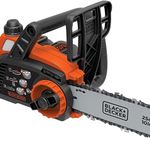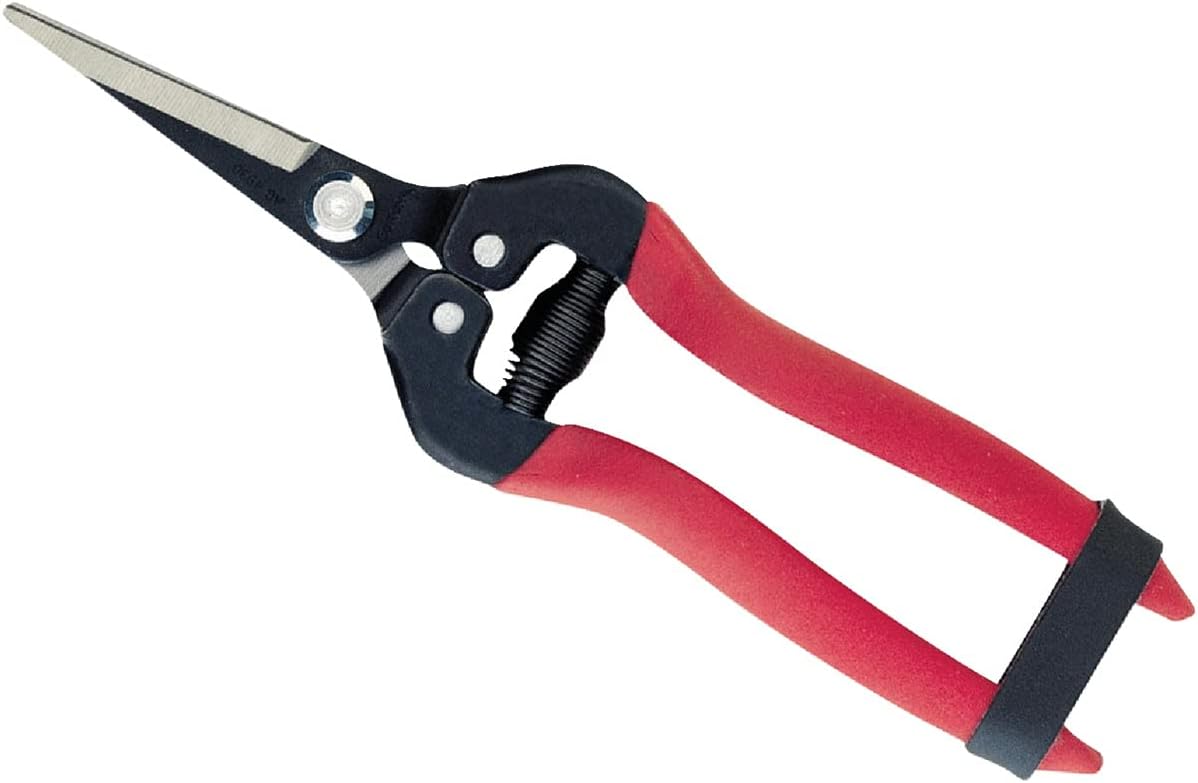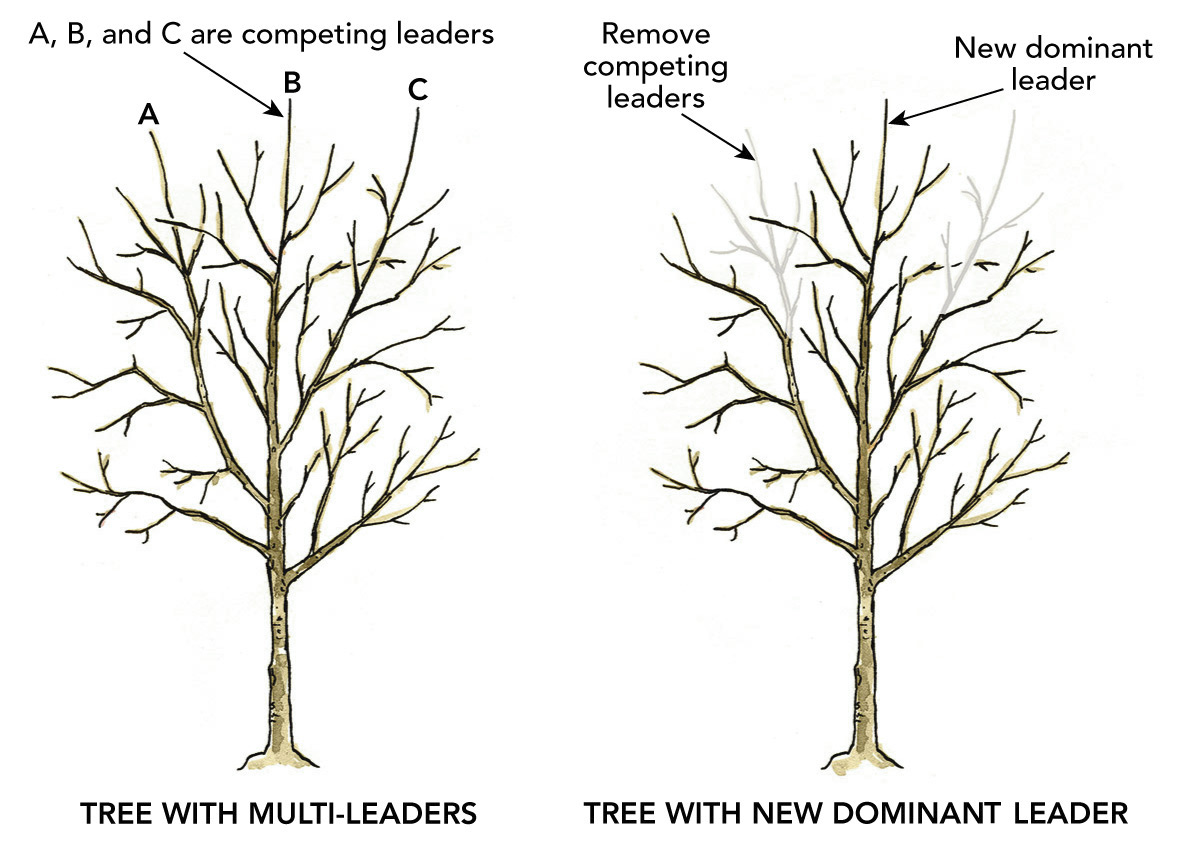Proper Pruning for Young Trees
Establishing a good structure for your young tree helps head off long-term issues

The act of planting a deciduous tree, particularly one you know will get quite large, comes with thoughts of the size and grandeur it will achieve over time. Knowing what a tree can become fills us with optimism and hope. All of us want to get it right, taking care in planting to make sure our new tree gets off to a good start. Conventional wisdom—and even some experts—tell us not to prune at the time of planting. This has merit. Pruning adds strain at a time when the tree is already overcoming the stresses of the planting process. That said, gardeners have a unique opportunity moments before a tree goes in the ground. Every part of the tree is accessible, and structural defects can easily and quickly be corrected. Many experts, myself included, are now advocating for at least some pruning at the time of planting, as long as it’s seasonally appropriate (avoid late-season pruning) and you don’t go overboard (remove no more than 40% of the canopy).
Before planting, the entire tree is accessible to pruning without ladders or specialty pruning equipment. Start by making a total assessment of the tree. It is possible that the tree is structurally sound and nothing will be required. However, while the tree is in its pot or on its side (if you are planting balled-and-burlapped), this is your last best chance to make quick and easy structural adjustments. If the tree isn’t likely to receive structural pruning routinely to remove defects over the next 15 years, even when it becomes large, then this will be the best chance to overcome long-term issues. Also, trees are resilient, particularly when they are young, and will almost certainly recover from early pruning. The following are some significant structural defects—poor tree architecture that can lead to breakage or tree failure over time—you might encounter in a tree, along with some instructions on how to fix them at the time of planting.
Ensure there is only one leader
The term “codominant stems” is used to describe two or more main stems that are in competition with each other (often called “multi-leaders”). These stems are often similar in diameter and emerge from near the same location on the main trunk. Codominant stems tend to fail at a higher rate during storms. Additionally, over time the stems may push against each other, and cracks may form below the stem.
Start by identifying which stem will be the dominant leader. Choose a stem that is fairly straight and centrally located. Then completely remove competing branches, or shorten them by removing the terminal portion back to a living lateral branch of equal or smaller diameter (see illustration, p. 36). These “reduction cuts” encourage the tree’s leader to grow upward and reduce competition to that leader. Reduction cuts can also be used to balance the overall look of the tree and help reduce the amount of material being removed.
Establish a healthy scaffold
1. Branches with overly narrow angles create bark inclusions, folds of bark that reduce the amount of attachment branches have to the main trunk or to scaffold branches. Bark inclusions may not be obvious on a young tree but can be avoided by removing branches that don’t have wide angles of attachment.
2. Clustered low branches can negatively impact the central leader of the tree, spoil tree structure, and shorten the overall life of the tree. Remove those branches that seem like clutter, bearing in mind the goal of scaffold branches evenly dispersed around the tree.
3. Large opposite branches can grow aggressively, causing structural weakness.
Beyond establishing a central leader, most other pruning is done for the purpose of establishing good scaffold branches, the primary limbs that form a tree’s canopy. These branches should be smaller than the trunk (half the size is ideal) and, when possible, spaced somewhat evenly around the tree. Deciding on scaffold branches is not something that happens all on planting day. You can, however, form a loose plan on which branches will be the major component of the tree’s canopy (see top illustration, this page).
Tree pruning is a skill that is learned over time. The above information is truly the beginning. Additionally, some species’ natural structure doesn’t conform to textbook-perfect pruning. I encourage you to continue the process of learning how to prune trees in a way that leads to overall better structure. As with people and pets, the process of training a tree is much easier at the beginning of its life.

What is apical dominance?
The trees in your backyard have relatives growing in a forest somewhere. Particularly at a young age, many of these forest trees are devoting a lot of their energy to growing upward, which means more light and perhaps a better chance at survival. Apical dominance is a forest tree’s ticket from the forest floor to the top of the canopy. It occurs when the main shoot releases hormones down the stem to inhibit the growth of lower buds and branches. Apical dominance ensures a healthy structure that maximizes light and resources for the tree.
Andy Pulte, Ph.D., is a faculty member in the plant sciences department at the University of Tennessee.
Illustrations: Elara Tanguy
More on pruning:
Pruning Tools: Does One Size Fit All?
Fine Gardening Recommended Products

BLACK+DECKER 20V MAX* Cordless Chainsaw, 10-Inch, Tool Only (LCS1020B)
Fine Gardening receives a commission for items purchased through links on this site, including Amazon Associates and other affiliate advertising programs.

Corona AG 4930 Long Straight Snip, Tempered Steel
Fine Gardening receives a commission for items purchased through links on this site, including Amazon Associates and other affiliate advertising programs.

Pruning Simplified: A Step-by-Step Guide to 50 Popular Trees and Shrubs
Fine Gardening receives a commission for items purchased through links on this site, including Amazon Associates and other affiliate advertising programs.









Comments
Log in or create an account to post a comment.
Sign up Log in